Second Skins, The final prototypes
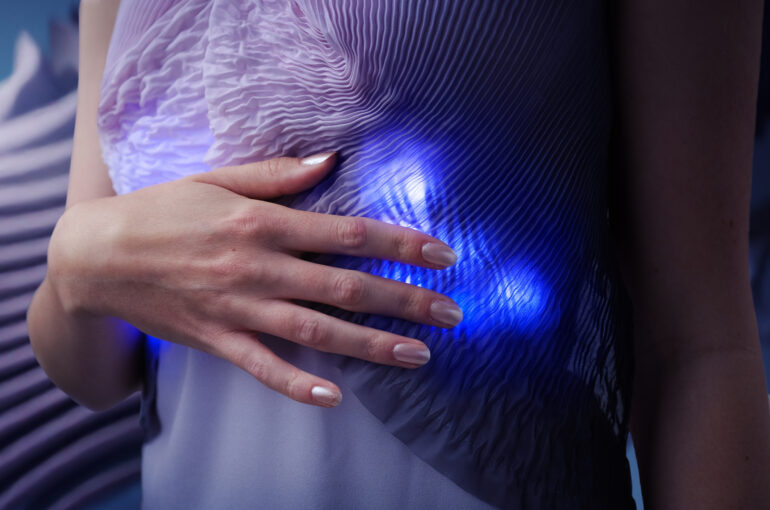
Prototypes
Finally, after 7 months, I was able to visit Fraunhofer IZM in Berlin, to work together in their labs for 3 weeks. It was great to experience that every part of the process had a specific expert and the whole team was extremely involved and helpful. It was also great to see all of us working together towards the same goal: a functioning prototype. Not only was the physical collaboration time shortened from 3 months to 3 weeks, it also happened in the last 1,5 months of the project. It was tensive to see if all the theoretical ideas we developed actually worked in practice in the way we expected. From embroidery design and bonding to body placement, material choices and programming: every part of the process had a lot of different challenges. Luckily, due to all the specialists involved, the risk calculations and expectations all worked out and we were able to realise not one but two different prototype designs.
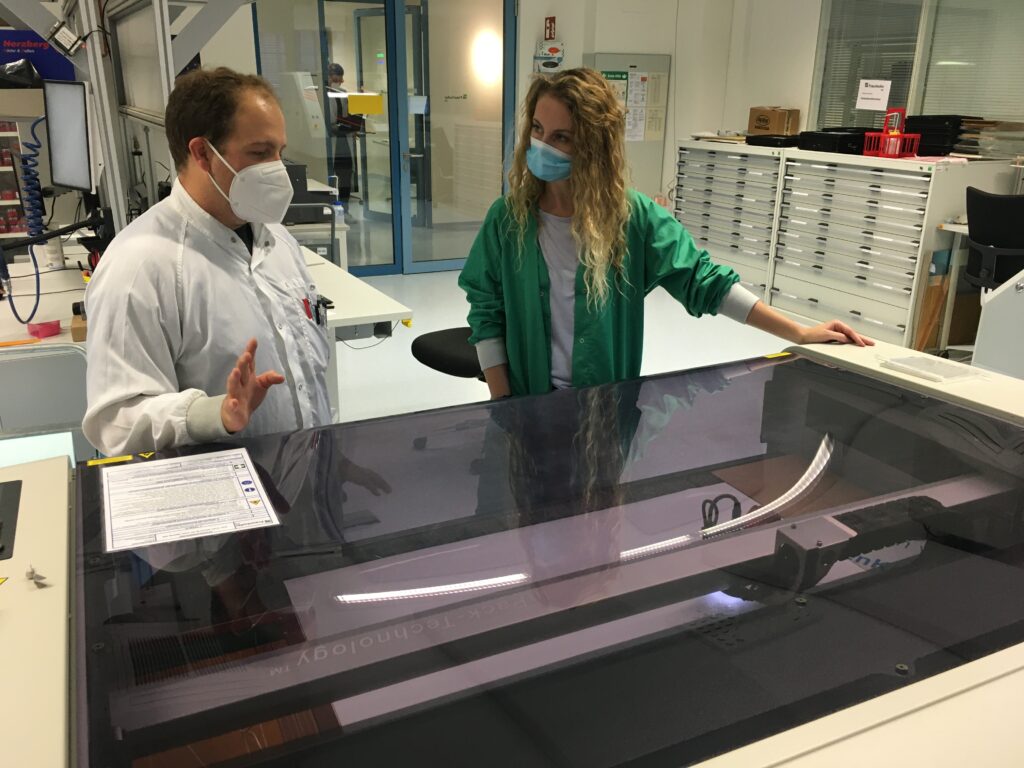 Testing the materials in the laser cutter with Martin Haubenreisser
Testing the materials in the laser cutter with Martin Haubenreisser
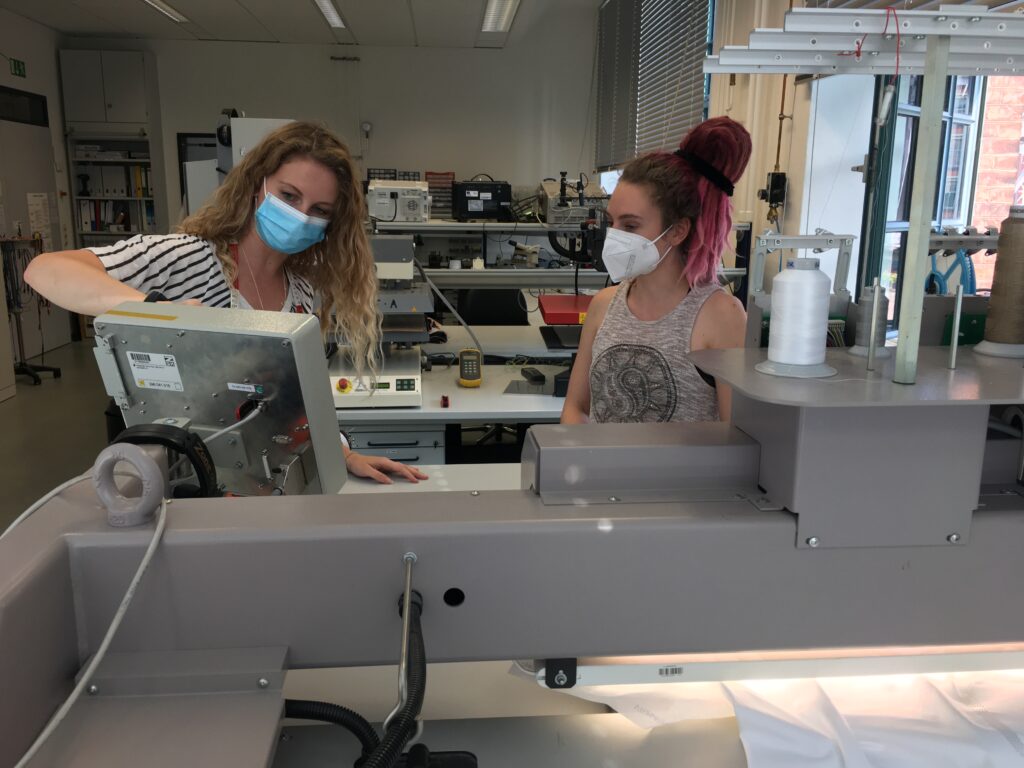 Making embroidery tests with Pauline Stockmann
Making embroidery tests with Pauline Stockmann
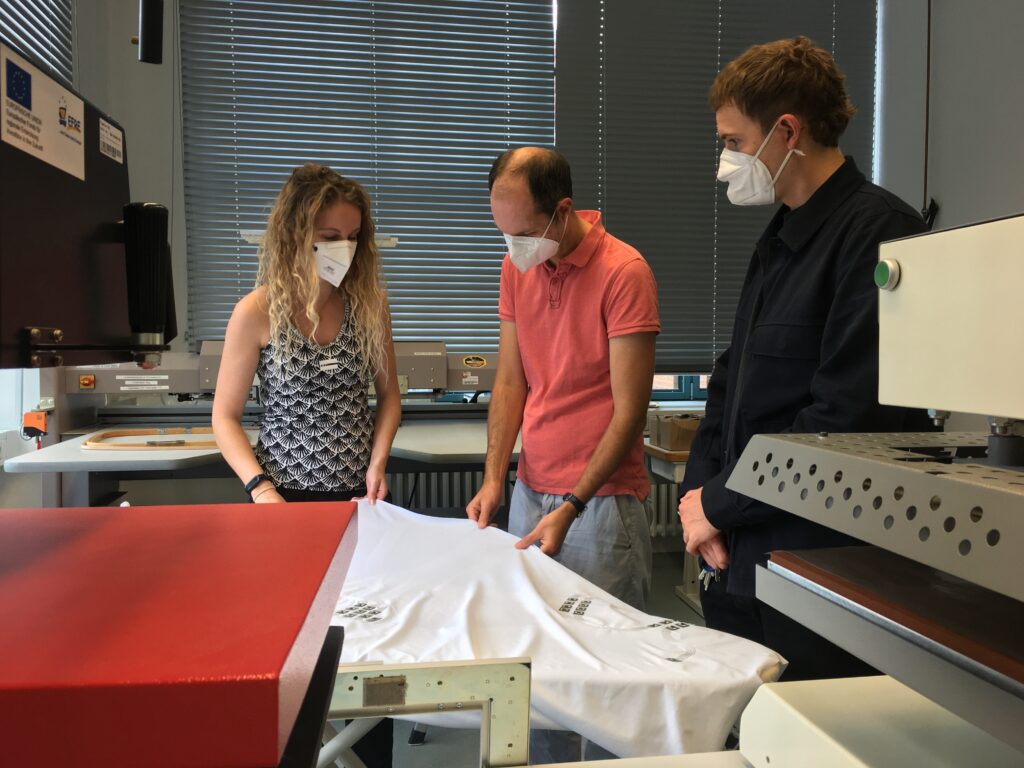
Evaluating the results with Christian Dils, Max Marwede and Robin Hoske
Undergarment
For the final prototype, we developed two undergarments with integrated modules from the Fraunhofer IZM hardware kit for e-textiles. Embroidered conductor tracks, made of insulated conductive thread, connect the circuit boards with LEDs and sensors to the main control. During our user test event, we learned that an input is required in order to be able to easily change the pre-programmed light or colour patterns and to be able to switch the light on and off. This was fully in line with the concept of adapting to how much you want to attract attention or become less noticeable. We, therefore, use the data from the IMU module (Inertial Measurement Unit) to implement a tap sensor.

One of the two final undergarments in operation
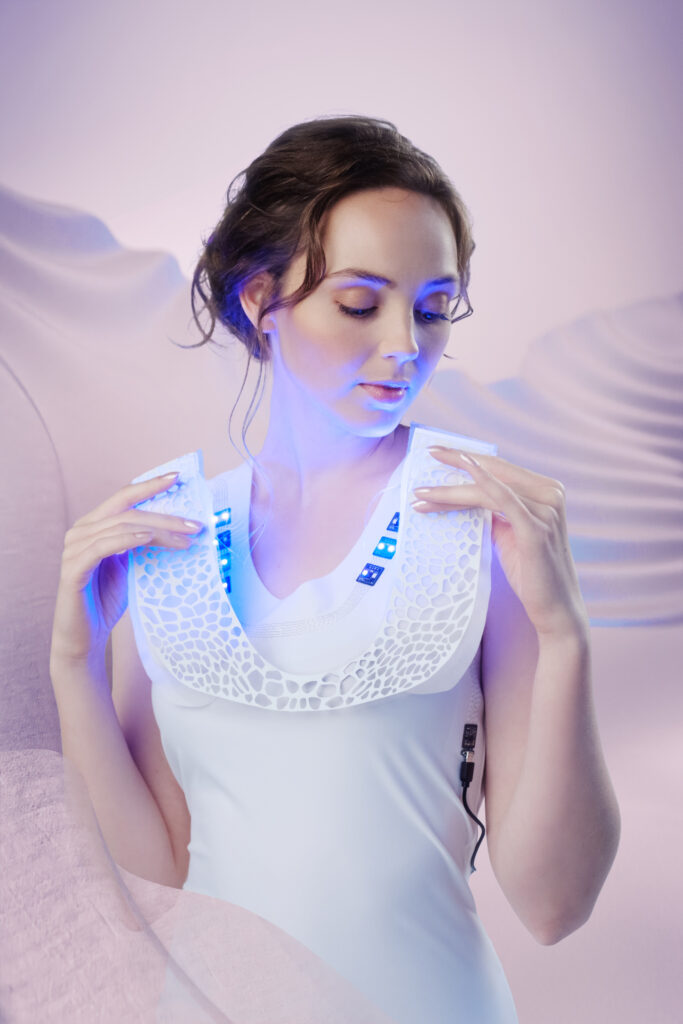
Undergarment with Mask layer
Top layers
Now that we have two working undergarments, we can explore the different options in terms of mask layers as well as top layer designs. For now, we have developed one dress for each light scenario: one for the light pattern in the middle around the neck and one for the light pattern on the ribs below the breasts. However, there are still many possibilities to develop, play, test and explore the different options.
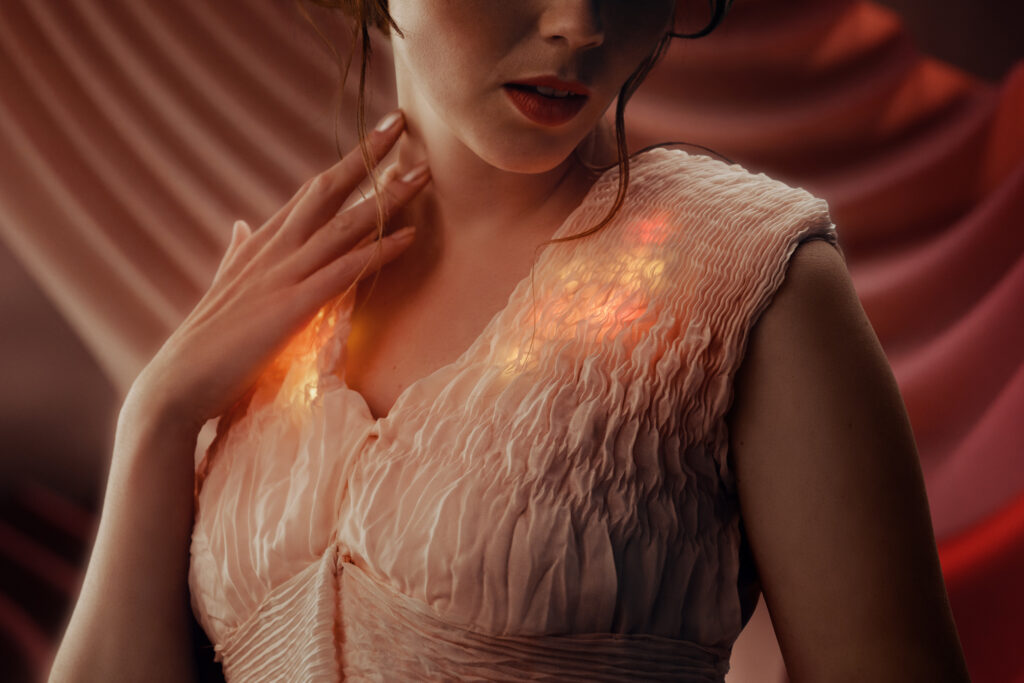
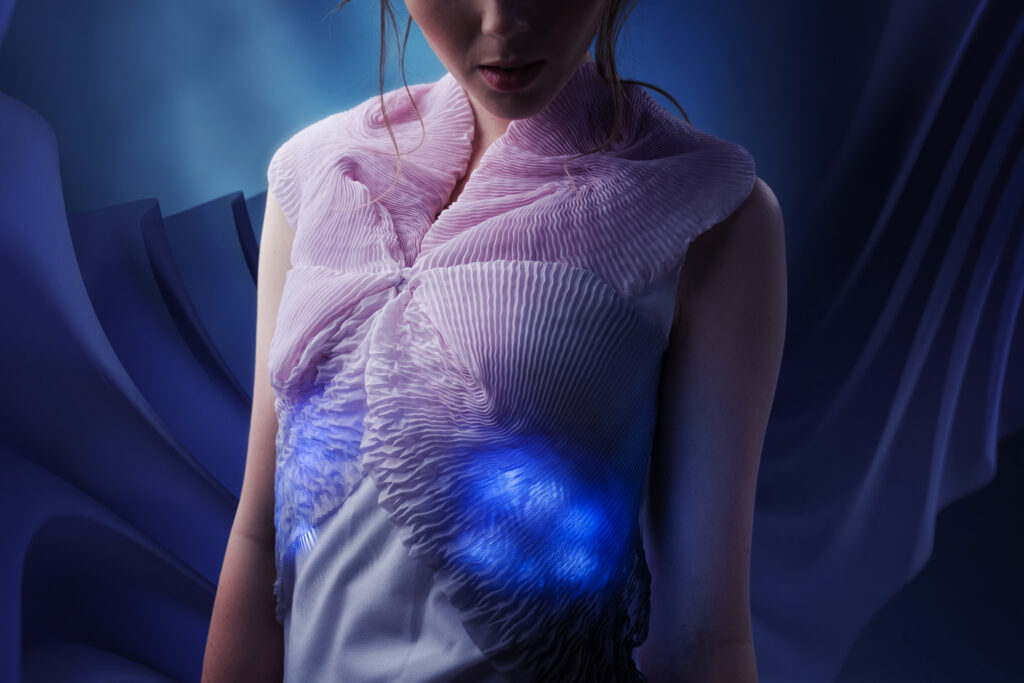
Details of the final garment designs
Installations
During our research and design process, we explored the modularity of the different layers. This is of course an aspect that is not communicated by just one or two finished garment prototypes. To demonstrate this aspect, we have developed two different installations in which you can see and touch different textile and material samples. They also visualize different combinations in relation to the backlighting system.
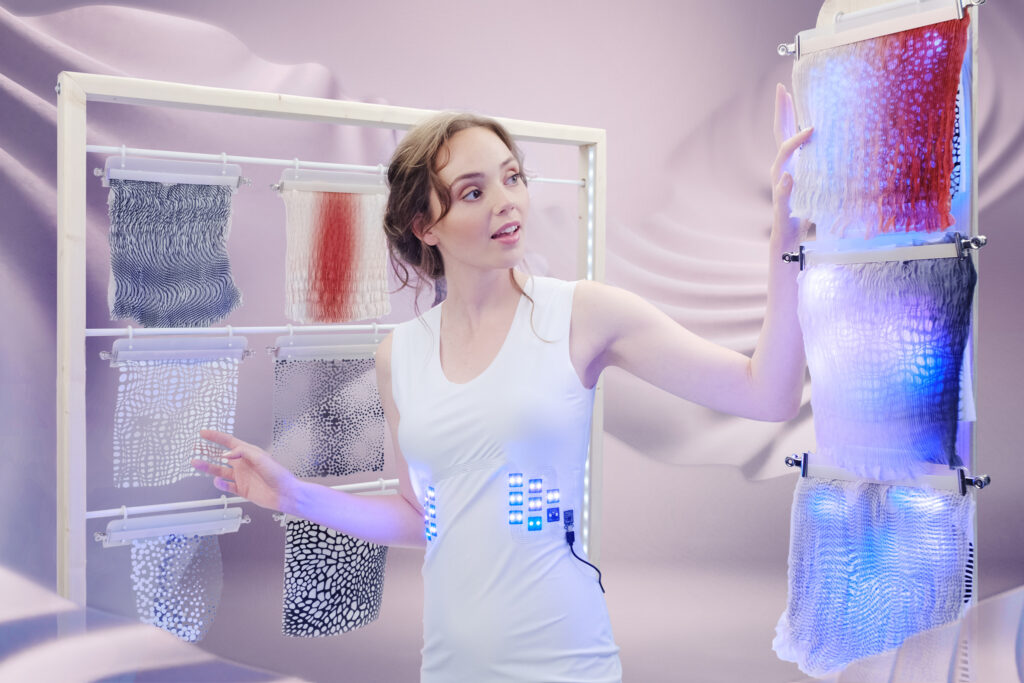
One of the final undergarments together with the 2 installations
The gap between research and reality
One of the biggest hurdles in the project was finding a fitting technique, material or possibility to generate the organic change we were looking for. Especially when it comes to making garments move, shape-shift, transform and adapt. There exists some research when it comes to this, but often not in relation to the body or on a wearable level. When we look at scientific and material research in regards to wearable tech, e-textiles and soft actuators, we found a big gap between the research results and the actual ability of implementation.
Research is often done within the parameters of a lab with specific conditions, which is an achievement in itself. But we need to continue to the next research phase, which explores the translation to implementation and tests directly in the personal space and on the human skin. That investigates the dynamics and interaction between the material and a body in movement from a user-centred perspective. To evolve into a new innovative and caring future system, it is essential that we are able to use scientific knowledge in regards to new materials and wearable possibilities, and invest in the bridge between research findings and the actual implementation of this. It is on this bridge where my research takes place and that rhymes with my vision and I hope to find opportunities to further explore this bridge in the future.
Sustainability positioning
When we talk about sustainability nowadays, there is a lot of focus on material sourcing and manufacturing. This is of course a super important aspect to be explored and improved. However, I believe we tend to neglect the other parts of the value chain that are equally important. We can shift into using better materials and production processes, but this will remain to be an issue if we don’t change our behaviour and relation towards our properties. If we keep on consuming and trashing, it will still be a linear process.
I believe it is time that if we choose to own a product, we also need to take responsibility and take ownership for it, by investing in a longer-term valuable relationship. This is not only up to the consumers themselves, but it is the task for us as designers, producers and suppliers to guide consumers into this new headspace.
Besides this, I believe it is important that we as designers also take this issue into regard during the design process. In the Second Skins project, we started to explore a modular design approach that opens doors to new dynamics, interactions and business models. Yes, taking the disassembly and end of use in regard during the design process takes an extra effort and brings a lot of challenges to the table, from construction and connection methods to material selection and manufacturing. I do however believe that this design approach can also bring a new wave of aesthetics with it that will not only elevate garment designs on a sustainable level, but can also evolve into a new language in regard to shape, structure and overall feel. These ideas were confirmed by our findings when we were exploring the IZM Planetary Design Tool with Max Marwede and Robin Hoske.
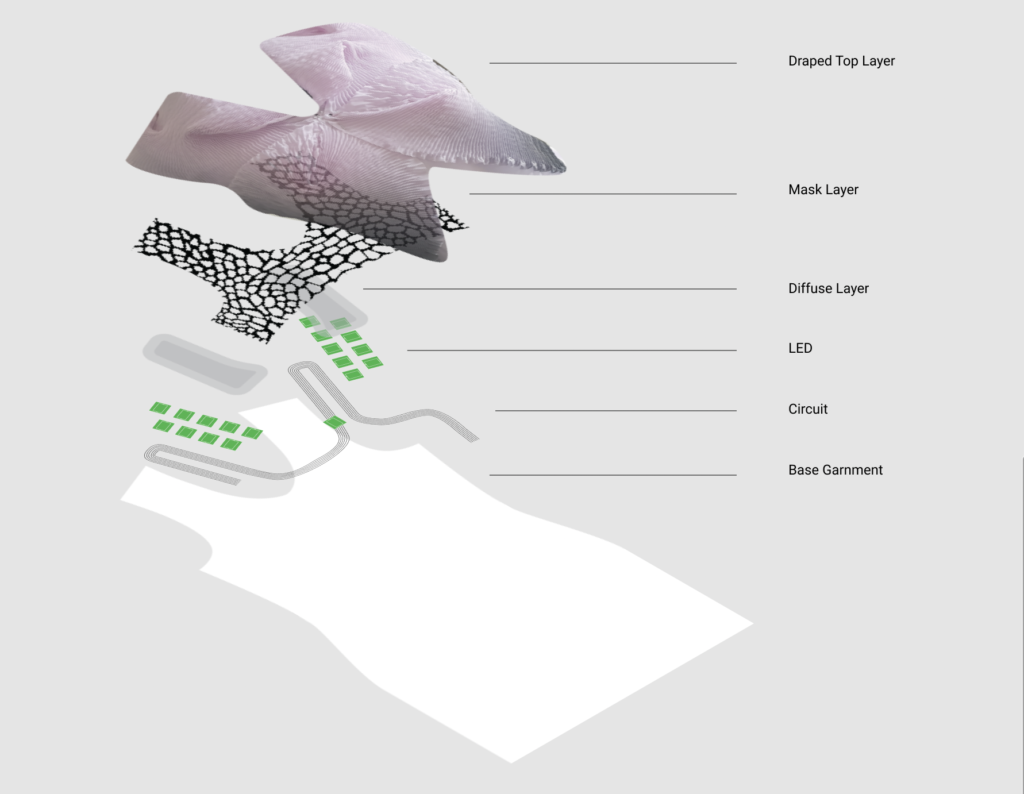 Overview of the different garment layers
Overview of the different garment layers
Reflection on the co-creation process
As most of us have experienced, working on a creative collaboration project during a pandemic is very challenging. It brought some nice features to the table in regard to easily digitally connecting with people worldwide. But when it comes to co-creating within a creative process, and I think that I can speak for my complete team here, the lack of being able to work physically together really impacted the process and the end result. Within creative exploration, it is essential to be receptive to all the input around you. Especially with interdisciplinary research, the input from all these different angles is extremely important. Of course, we were able to do this on a theoretical level using digital platforms, but it truly missed the fusion of engaged minds. This in itself is one of the objectives of the Re-FREAM concept and was also my biggest motivation to apply for the opportunity. Although this has not been the case at the level I hoped for, this process confirmed the importance of these kinds of collaborations. And I must say that I truly believe we really made the best of it and I’m grateful and pleased with the end results.
When I talk about end results I don’t only mean the final prototypes, photos and videos. This whole experience really helped me to filter and formulate the essence of my positioning as a designer as well as my vision on the future innovation of this field.
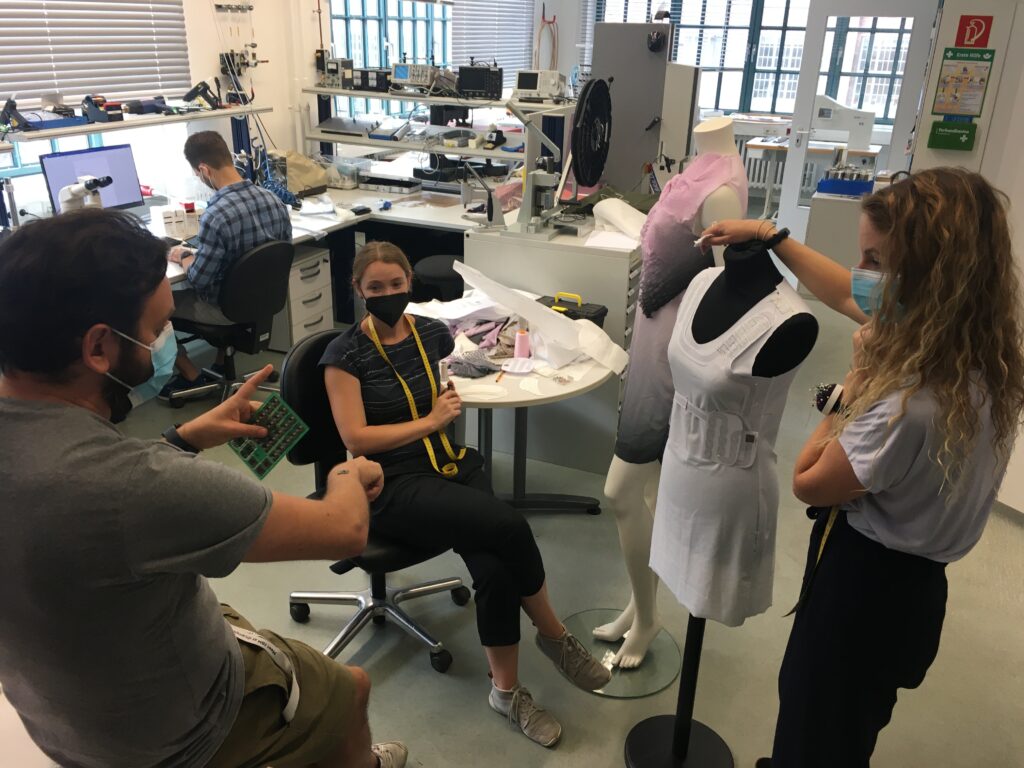 Making a work plan with Kamil Garbacz, Janin-Anne Schulze and Christian Dils
Making a work plan with Kamil Garbacz, Janin-Anne Schulze and Christian Dils
To conclude
During our process, we have formulated two different concepts in regard to adaptive, caring garments. Within this project, we were able to visualize one of these concepts using reactive light as a material. We explored a modular design approach that has a lot of potential for new future business models. The second concept – making garments move and adapt by using for example artificial textile muscles or soft actuators to support and care for the wearer, not only on a practical but also an emotional and social level – is still waiting to be explored. Hopefully the research can be continued with the new network that was established within this project.
To get an idea of the process, see the making of video [click here].
To see the final prototypes in action, see our final video [click here].
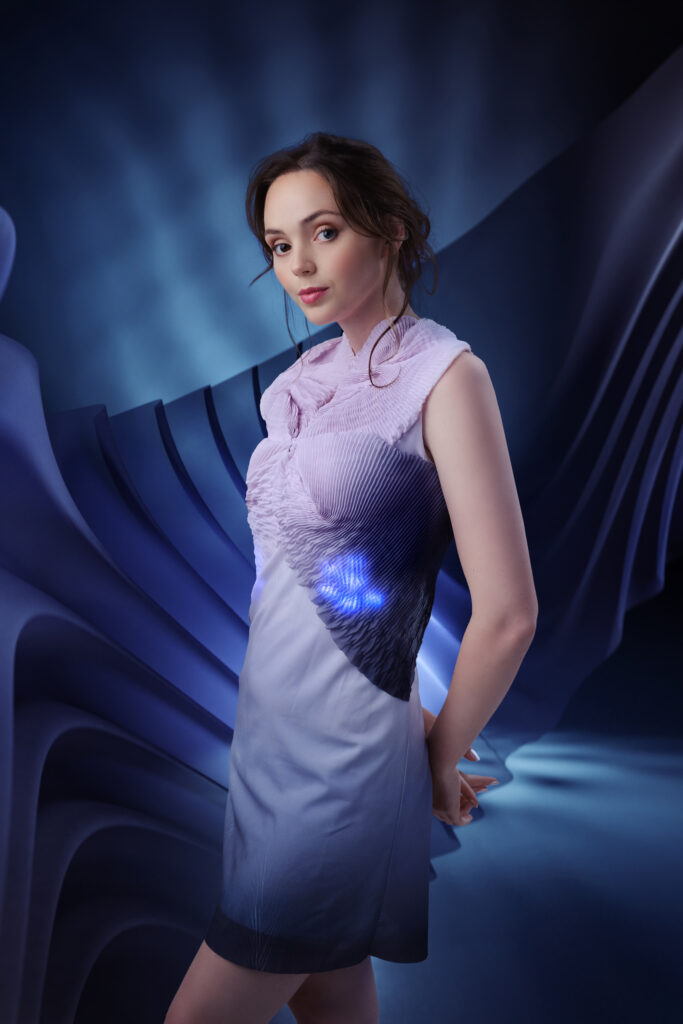
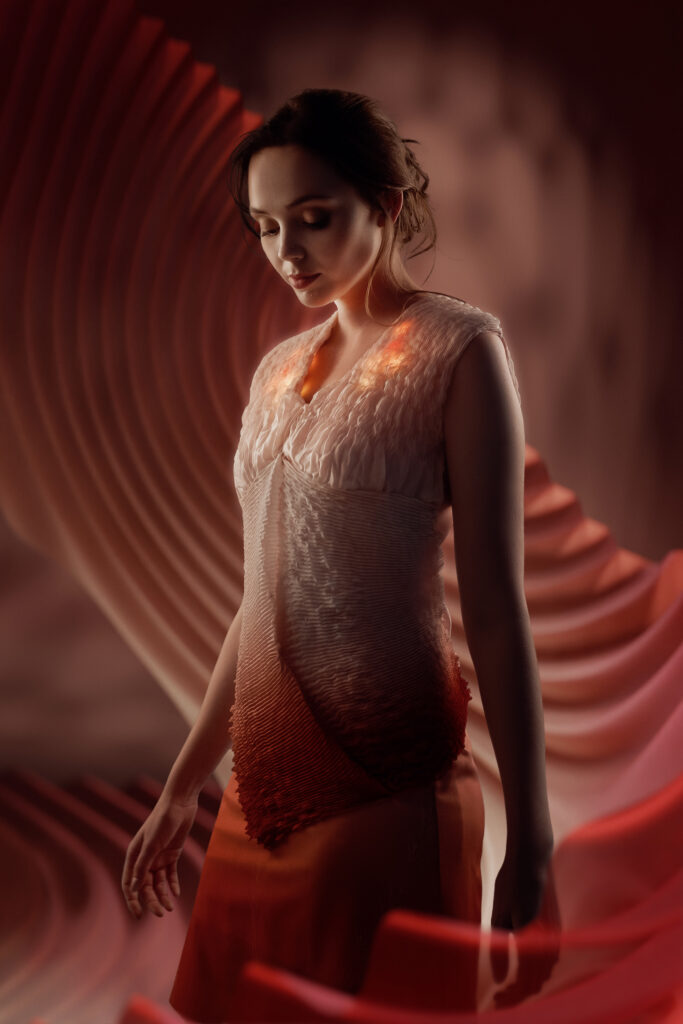
Final garment designs
Credits photoshoot:
Photographer & visual artist Patrick Klein Meuleman
Hair and makeup Esther de Graaff
Model Danielle Kroon





